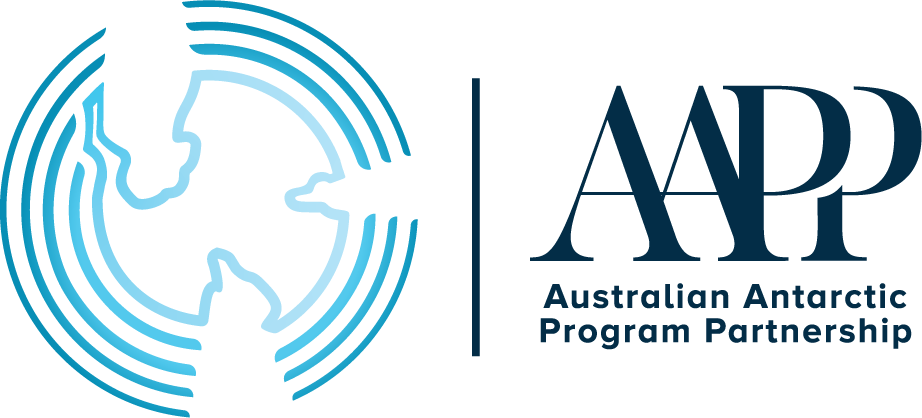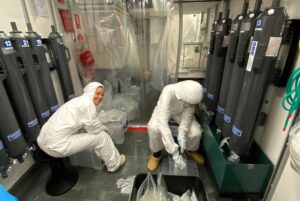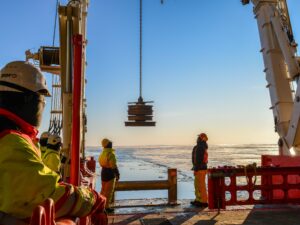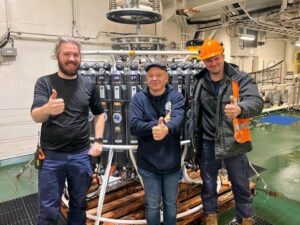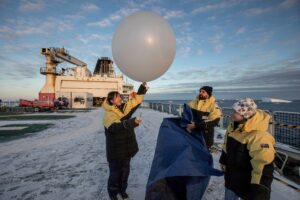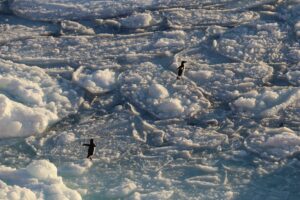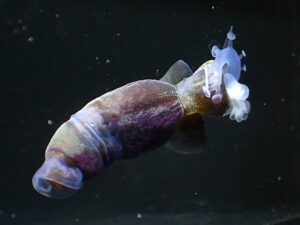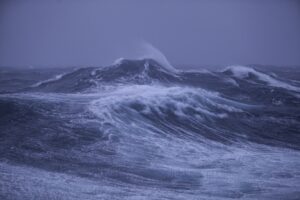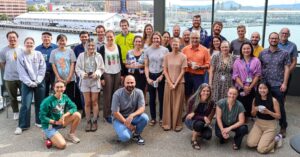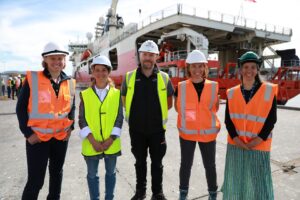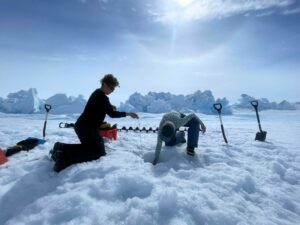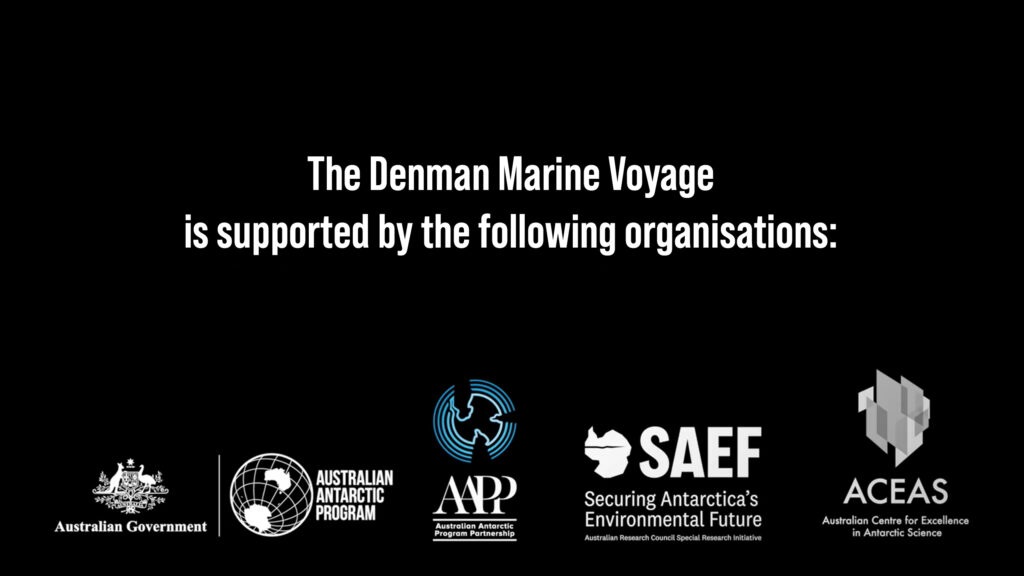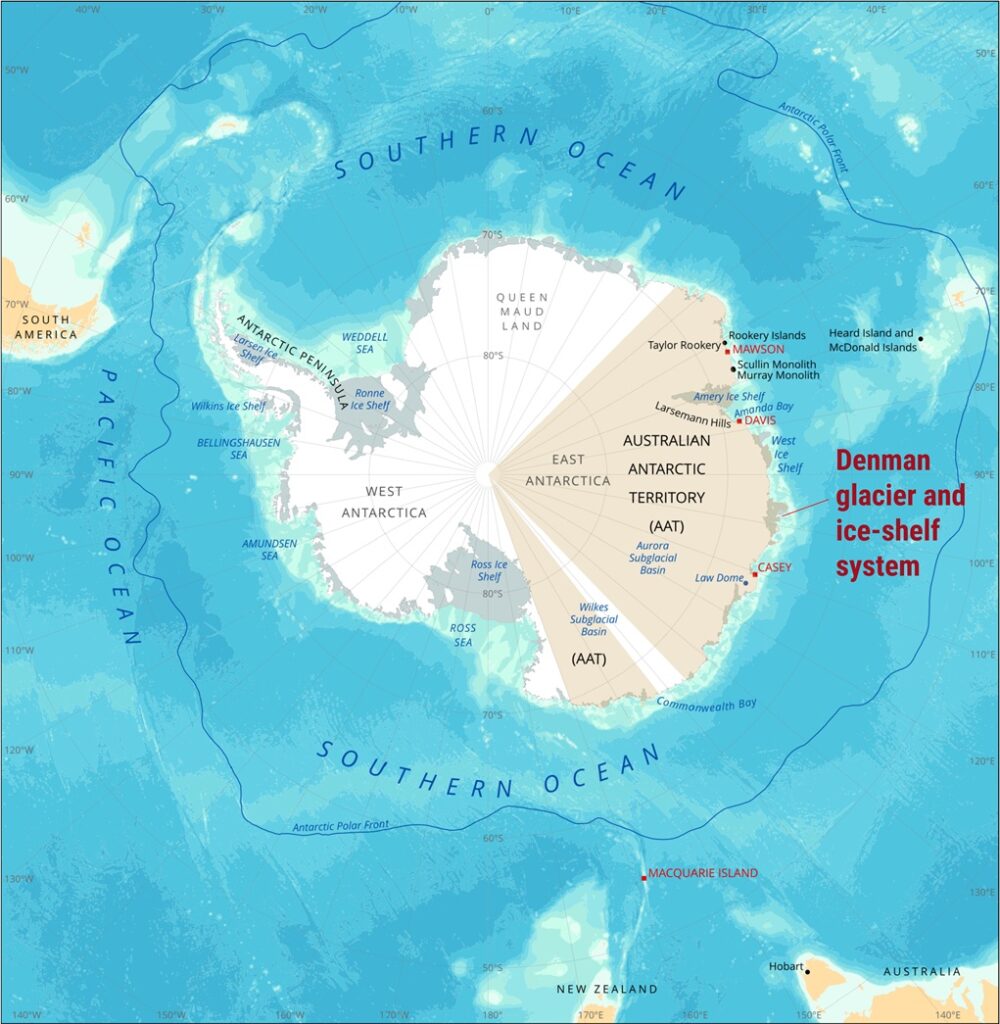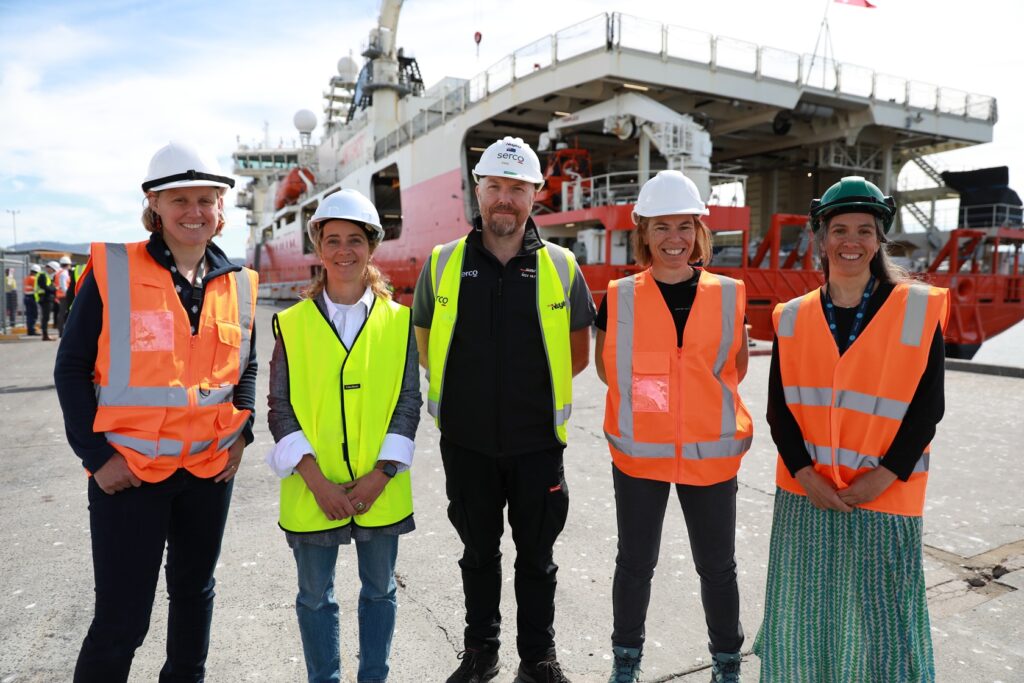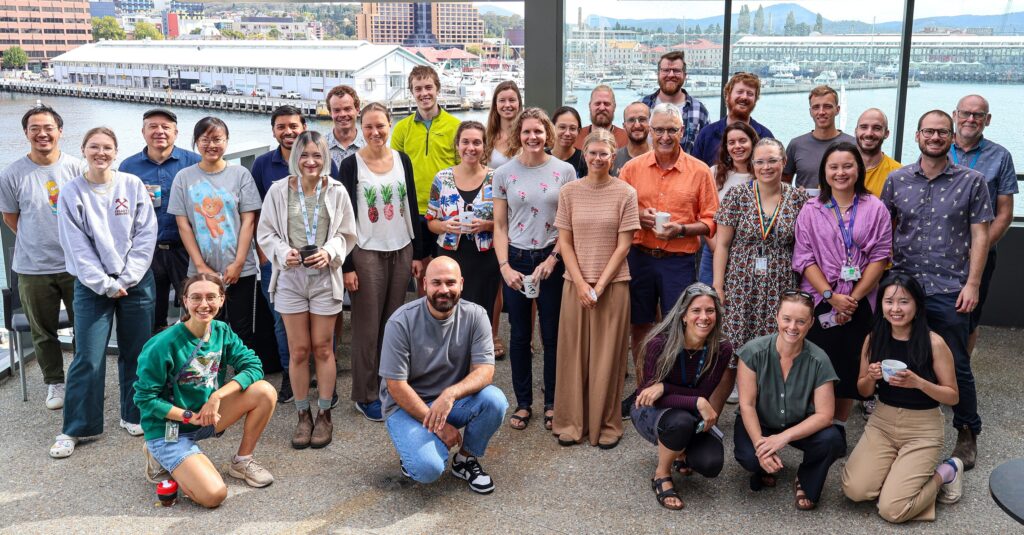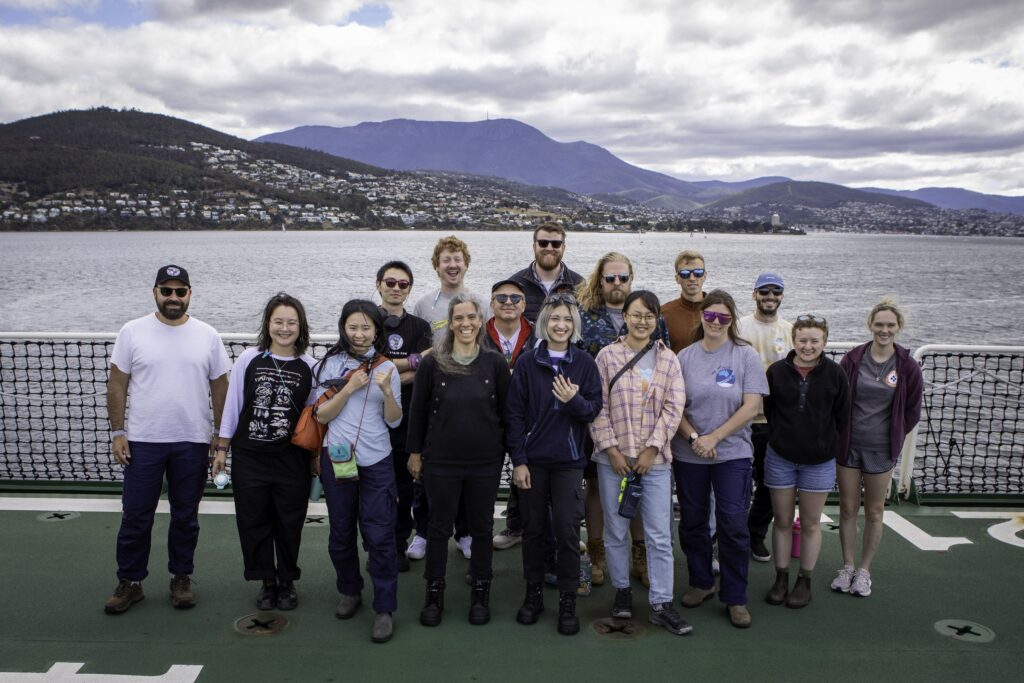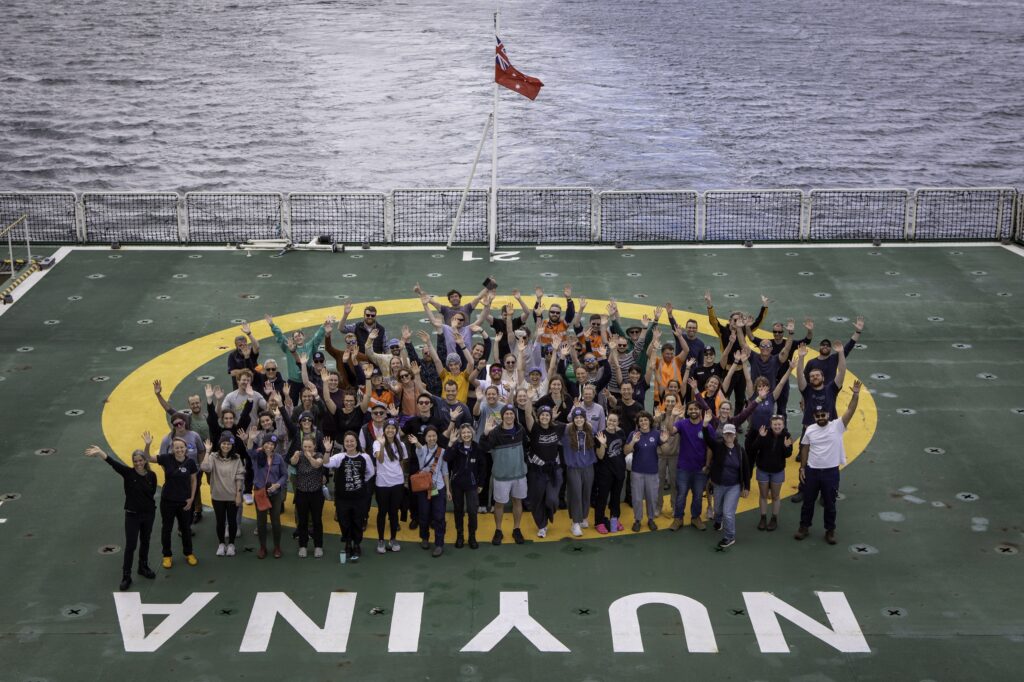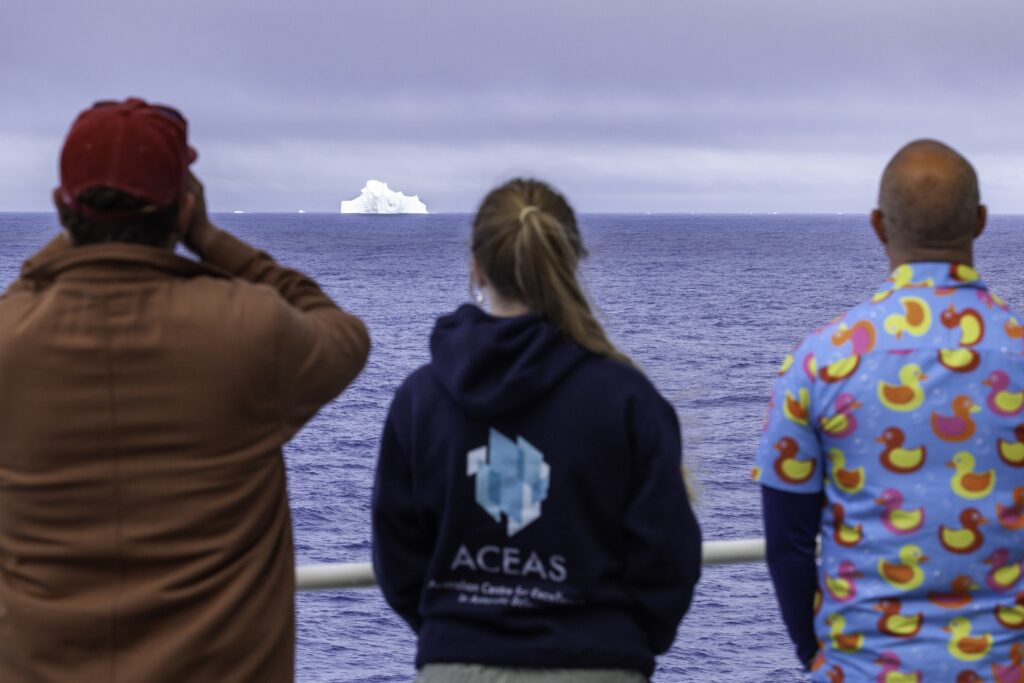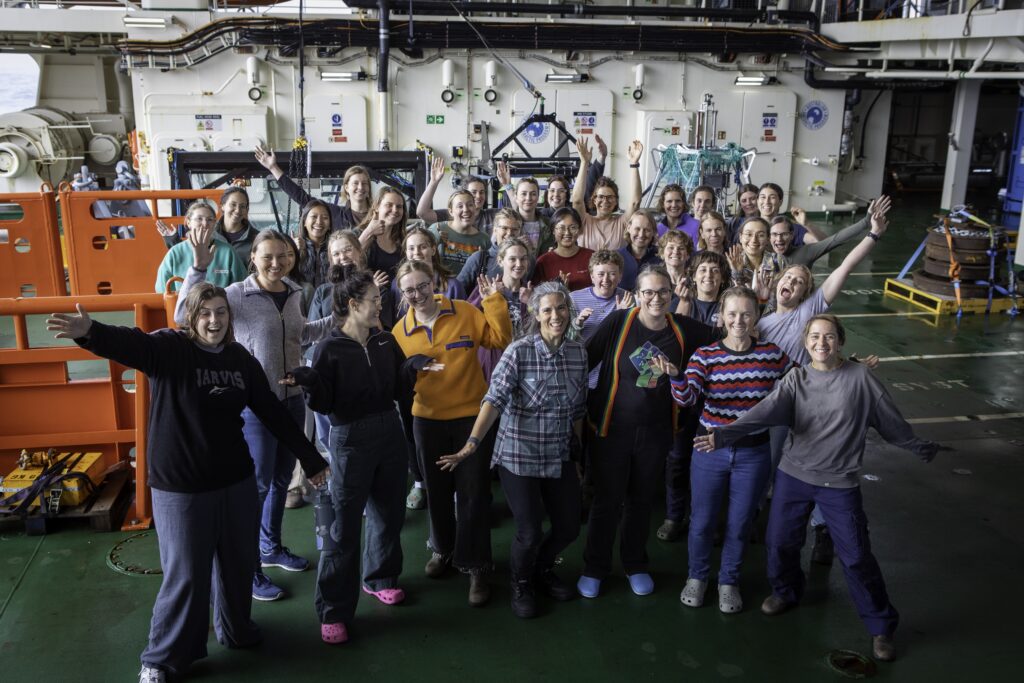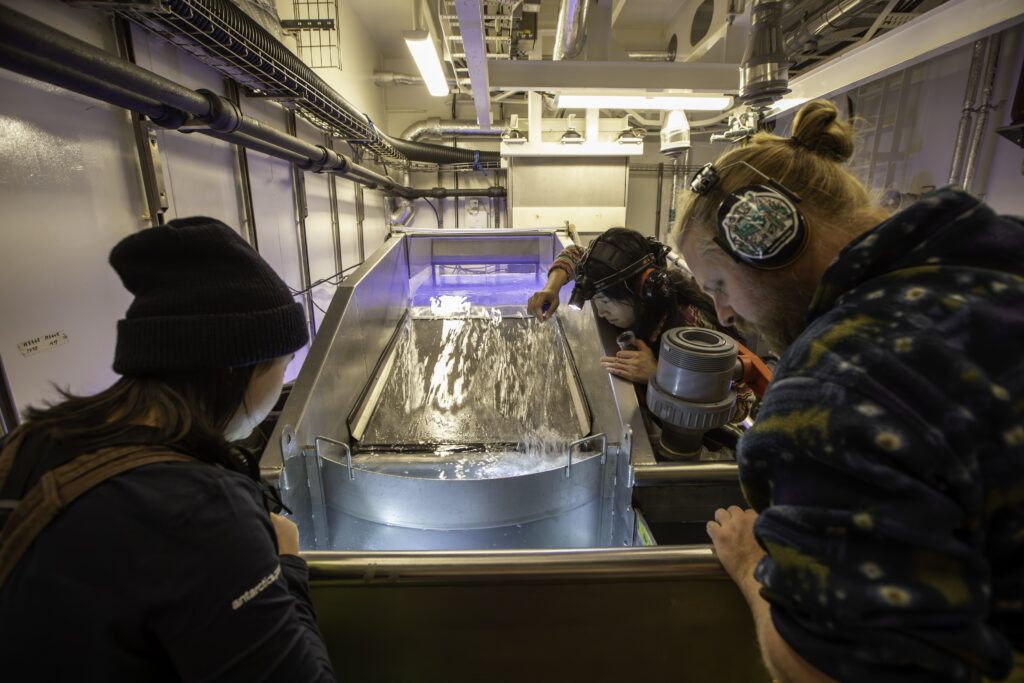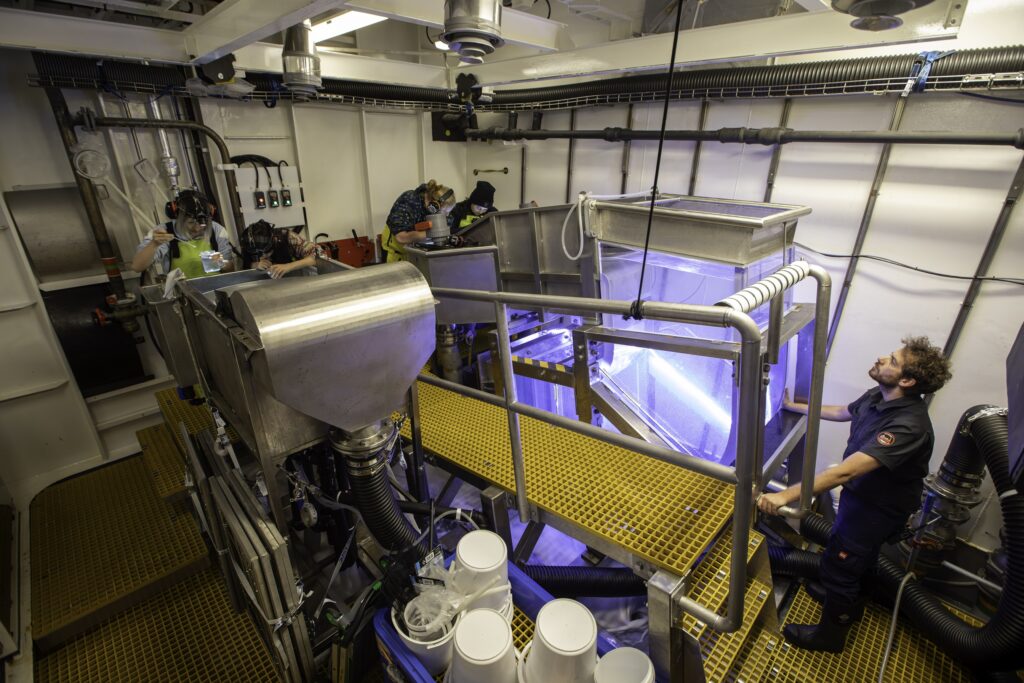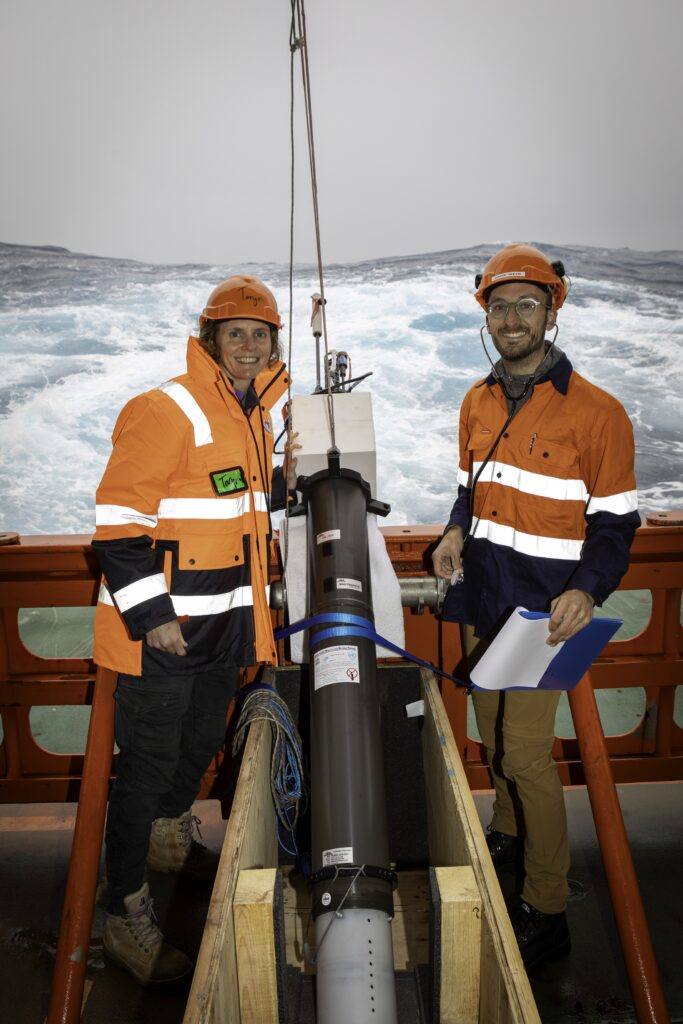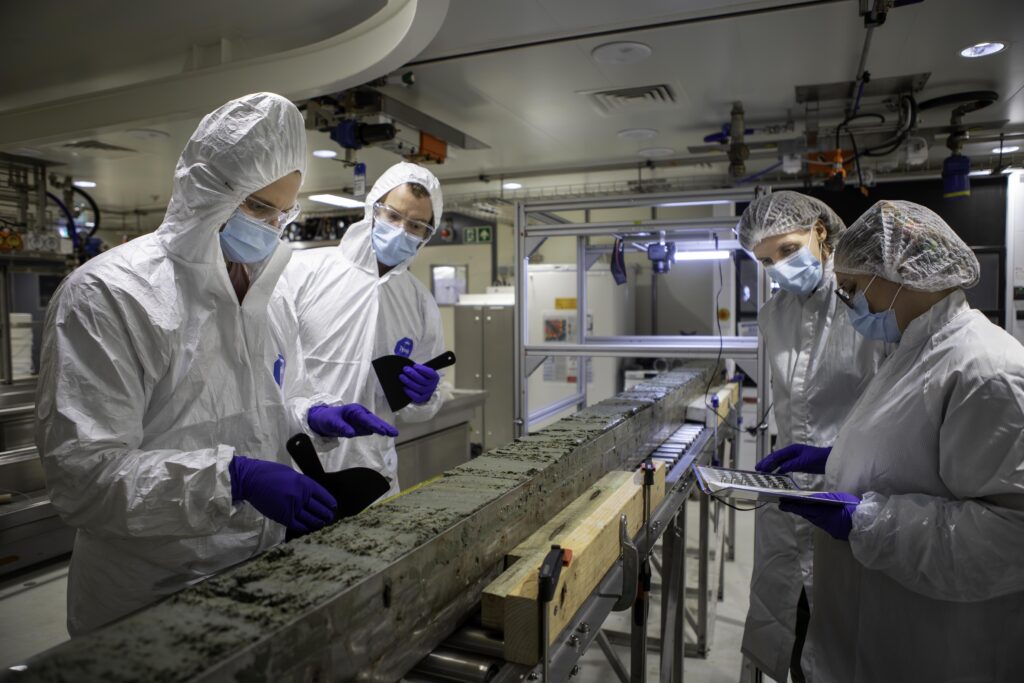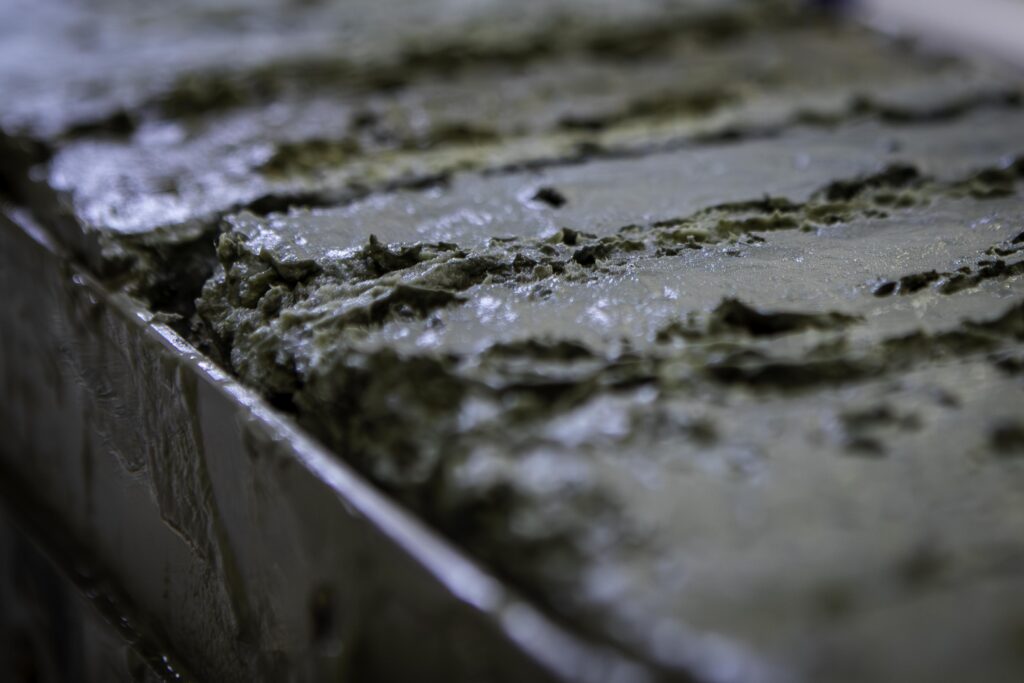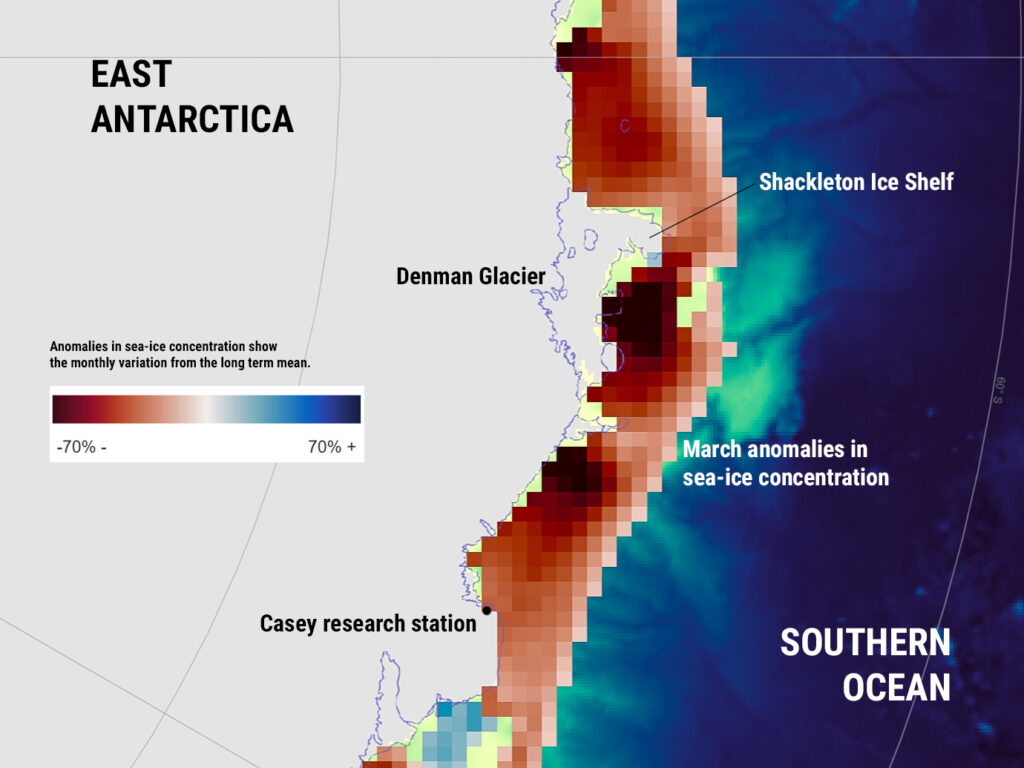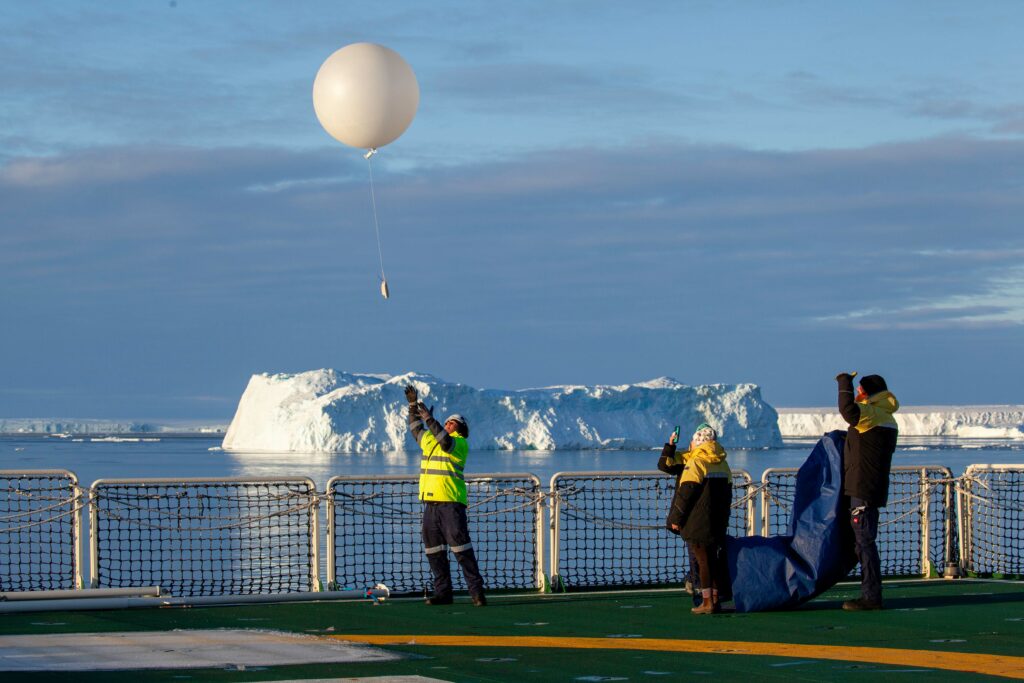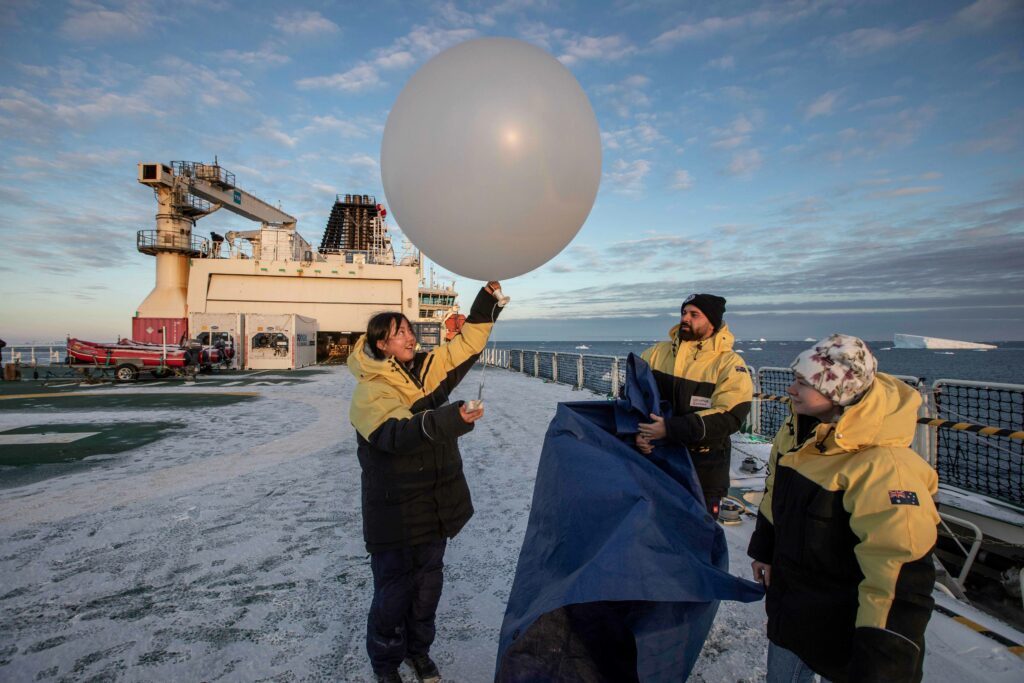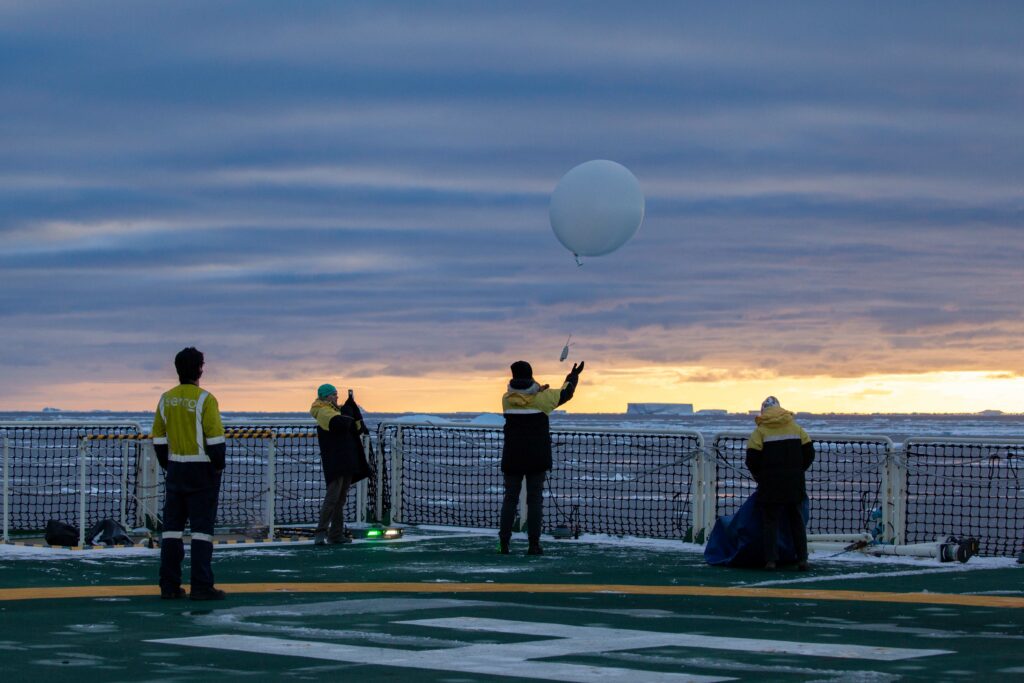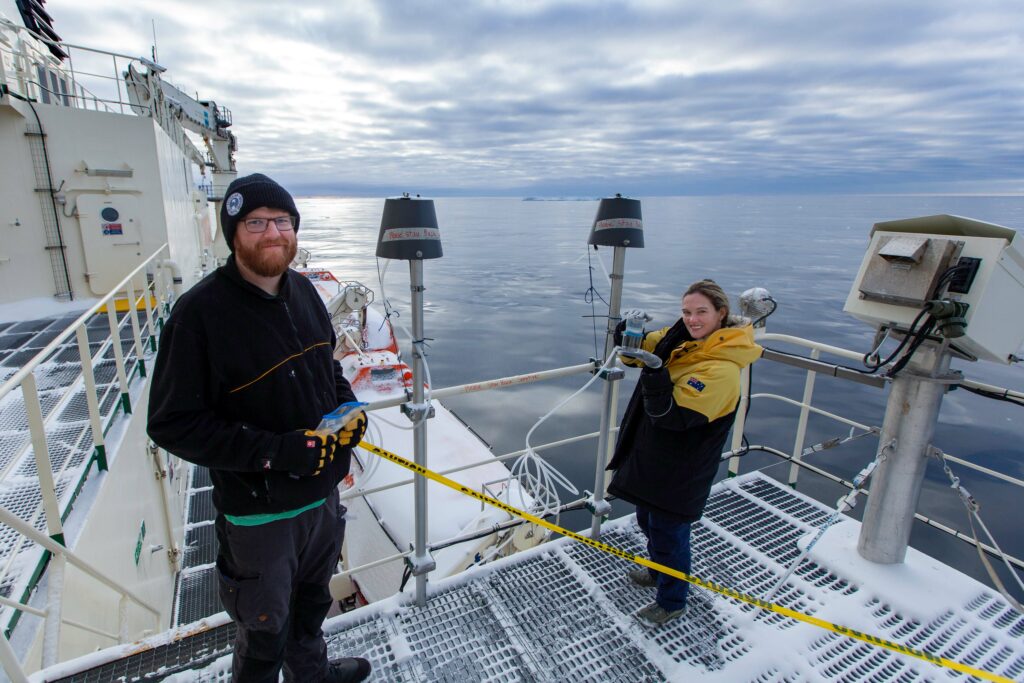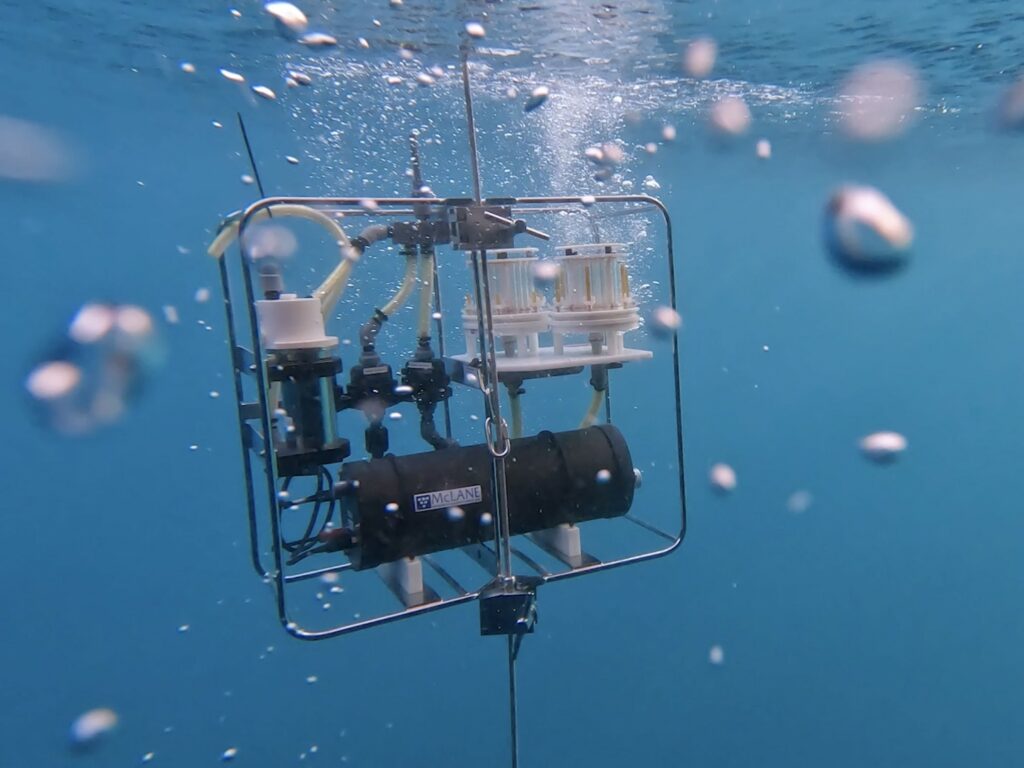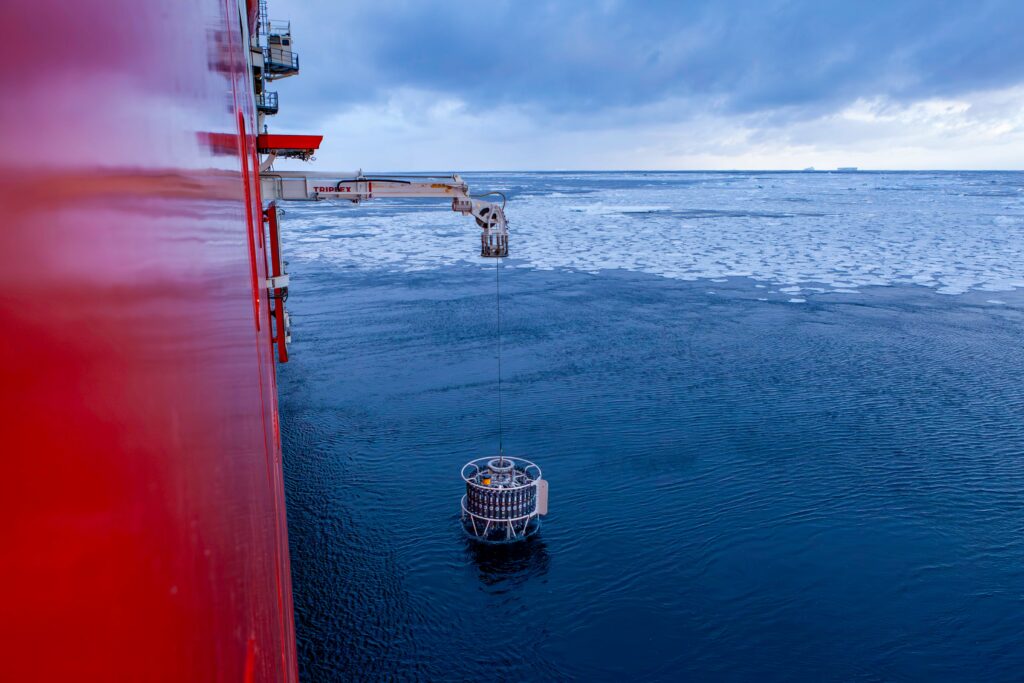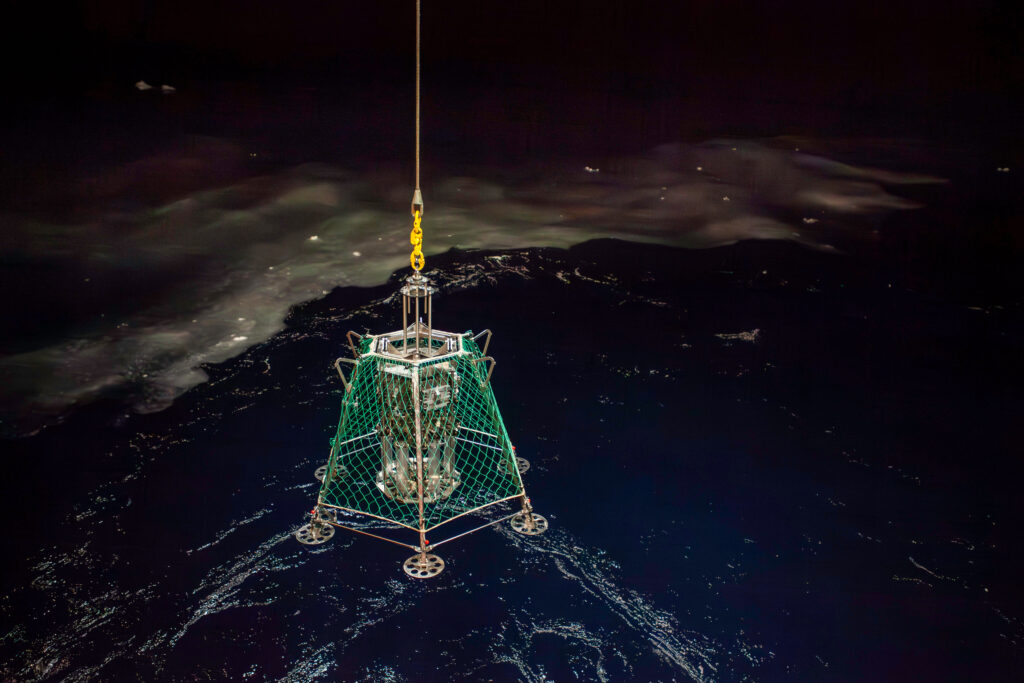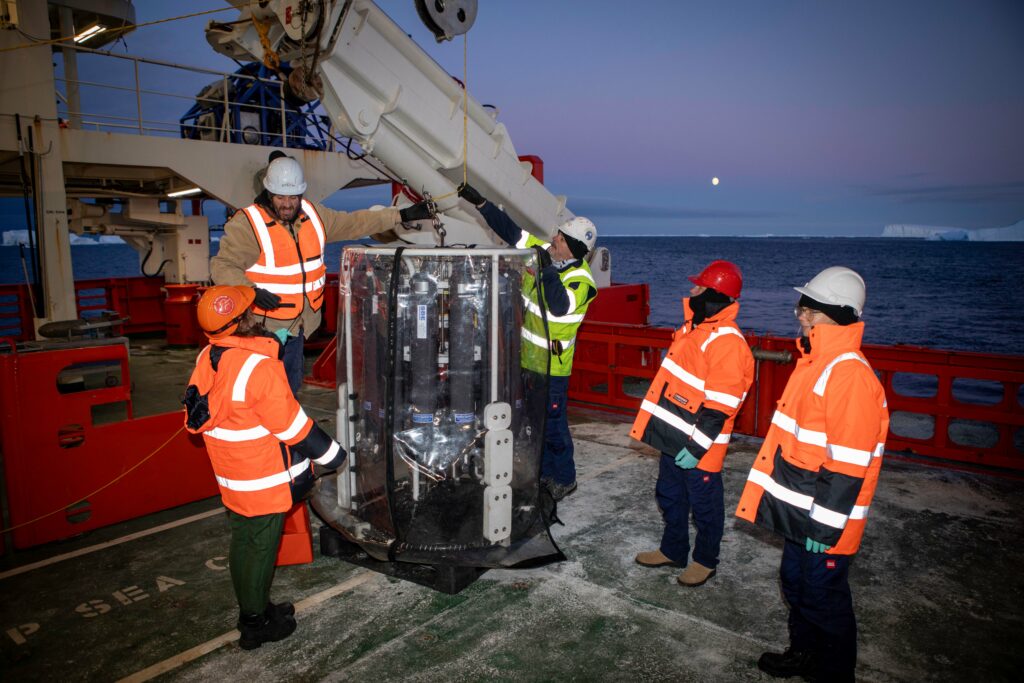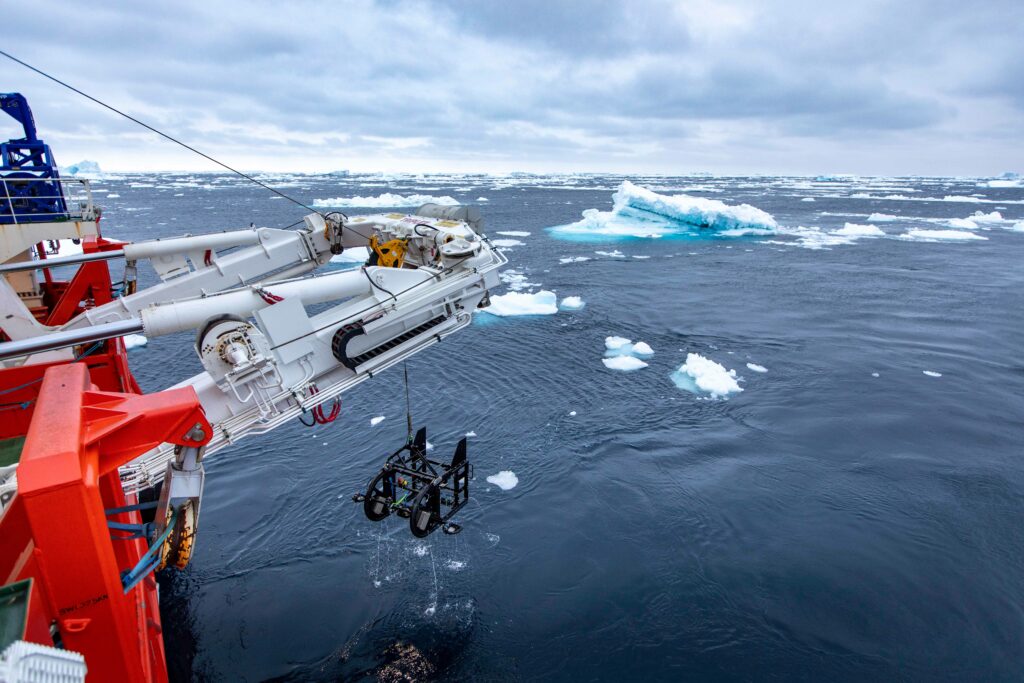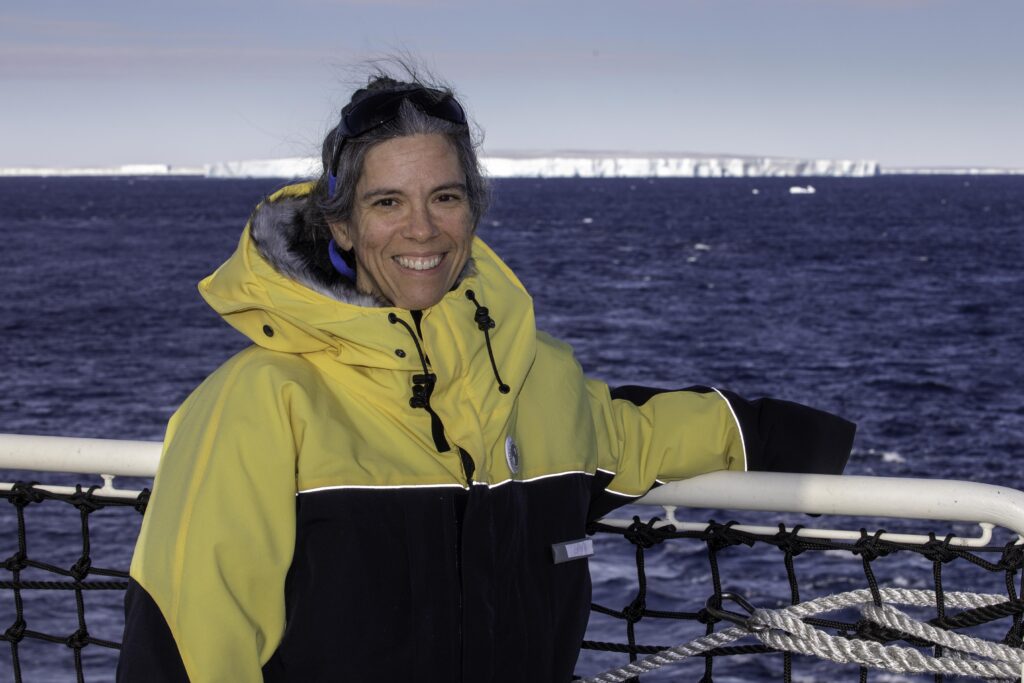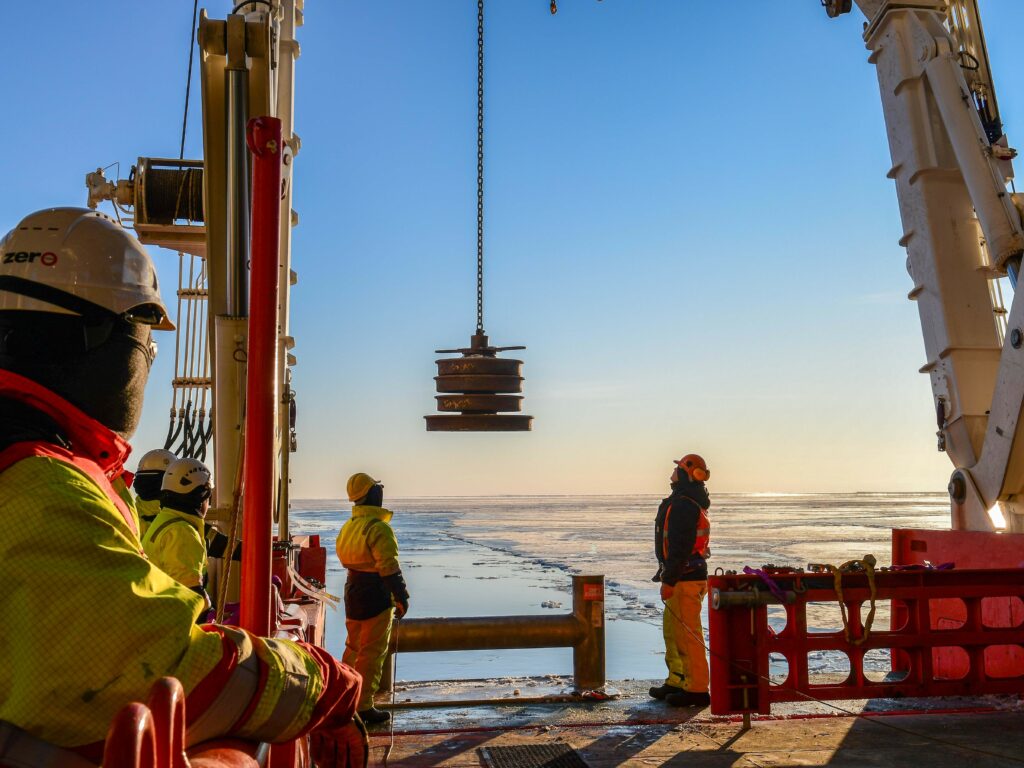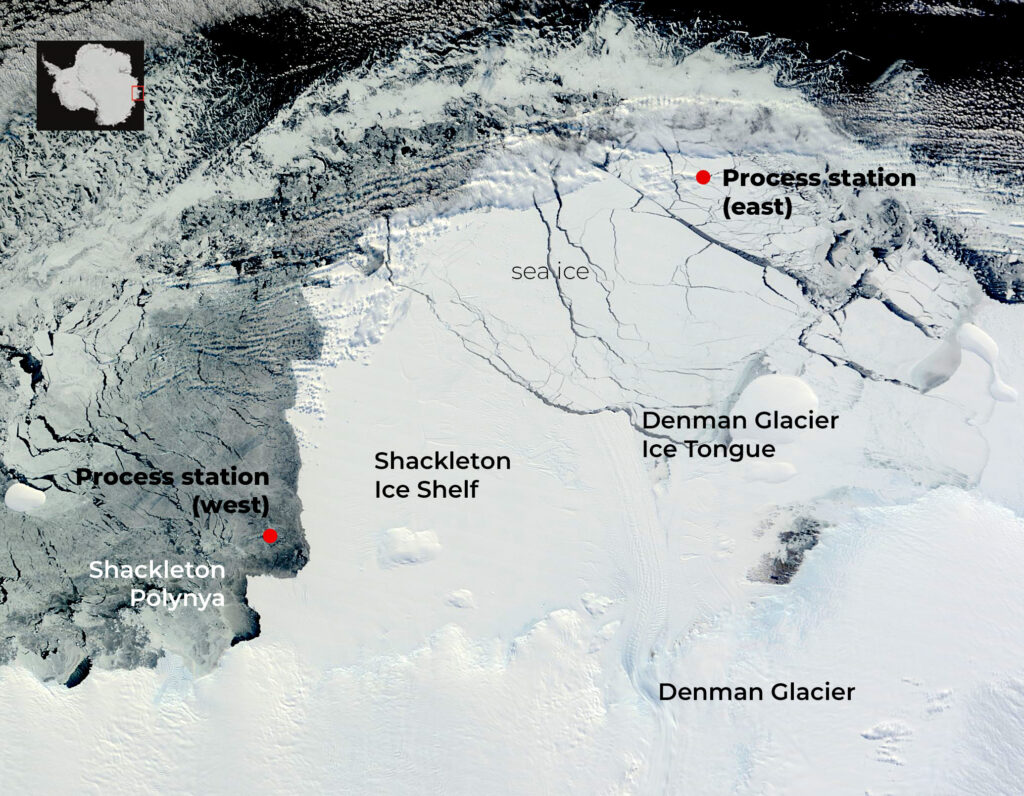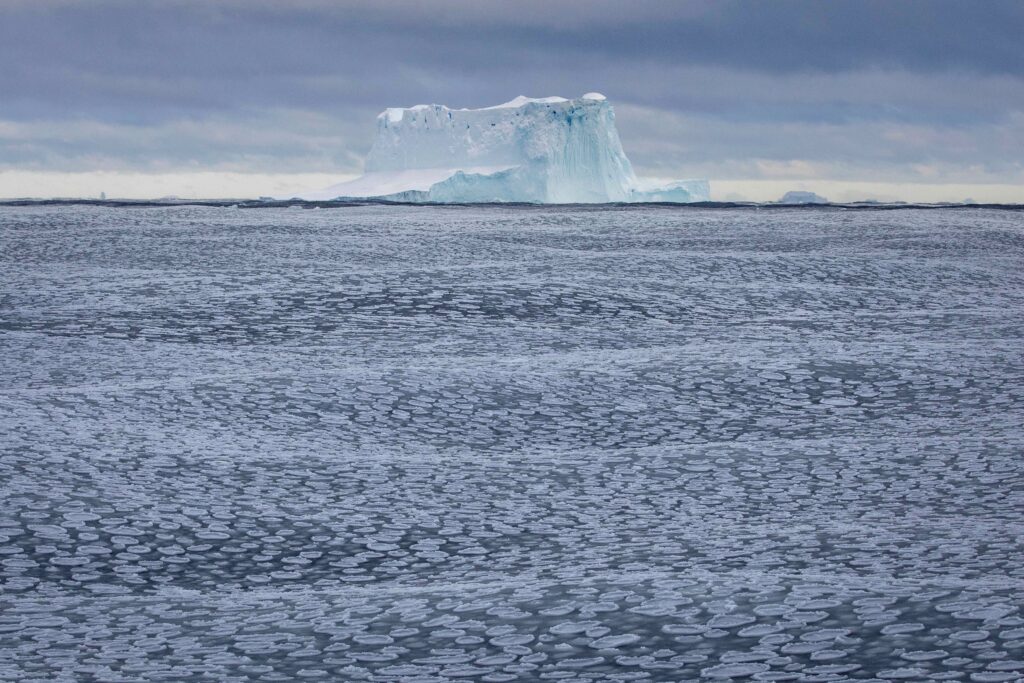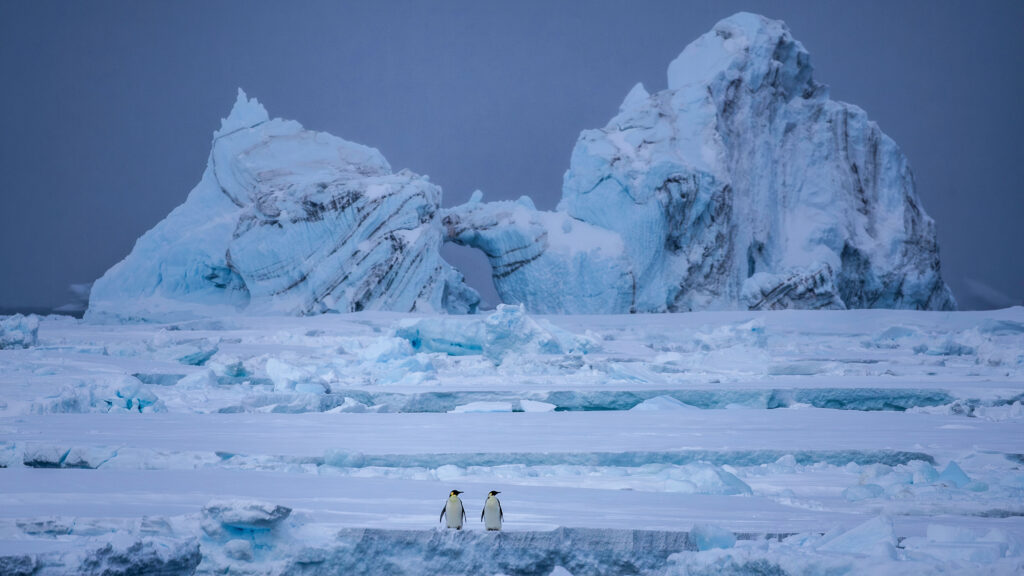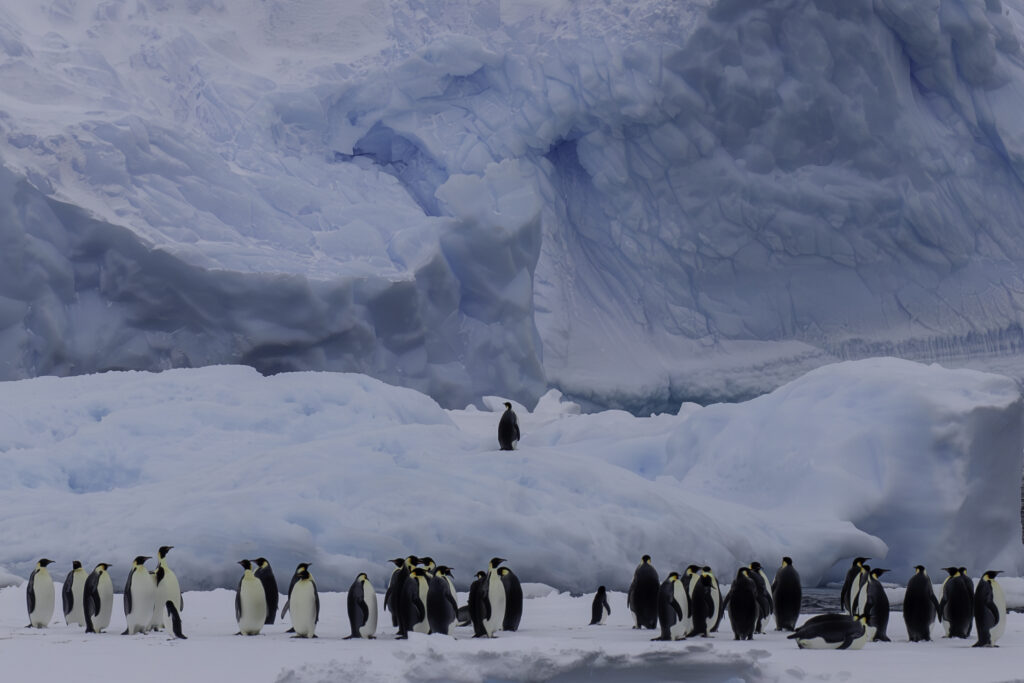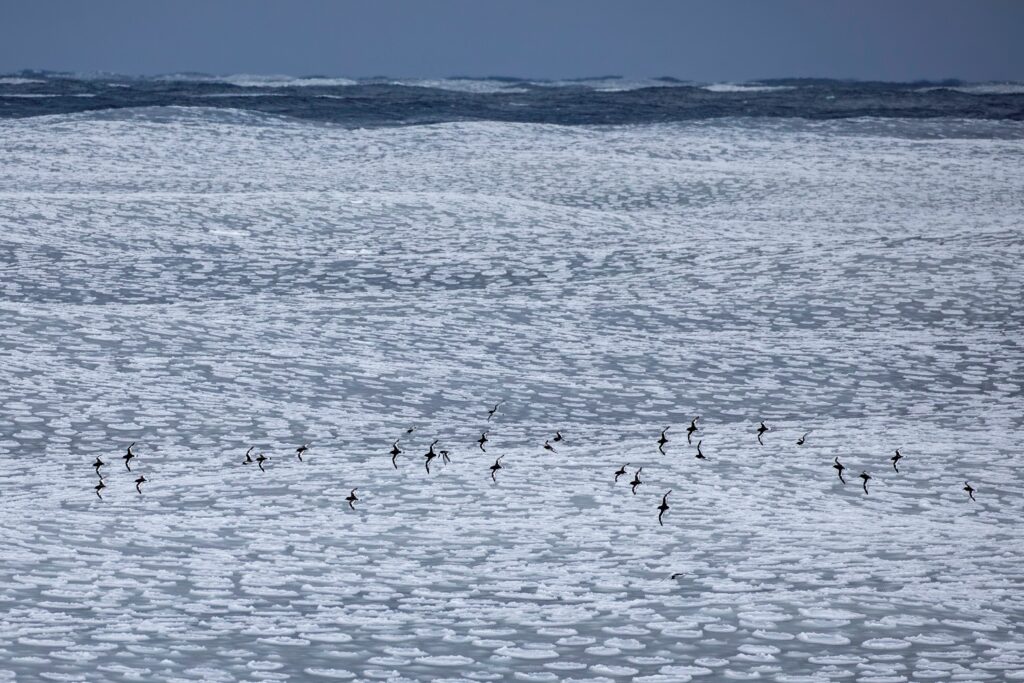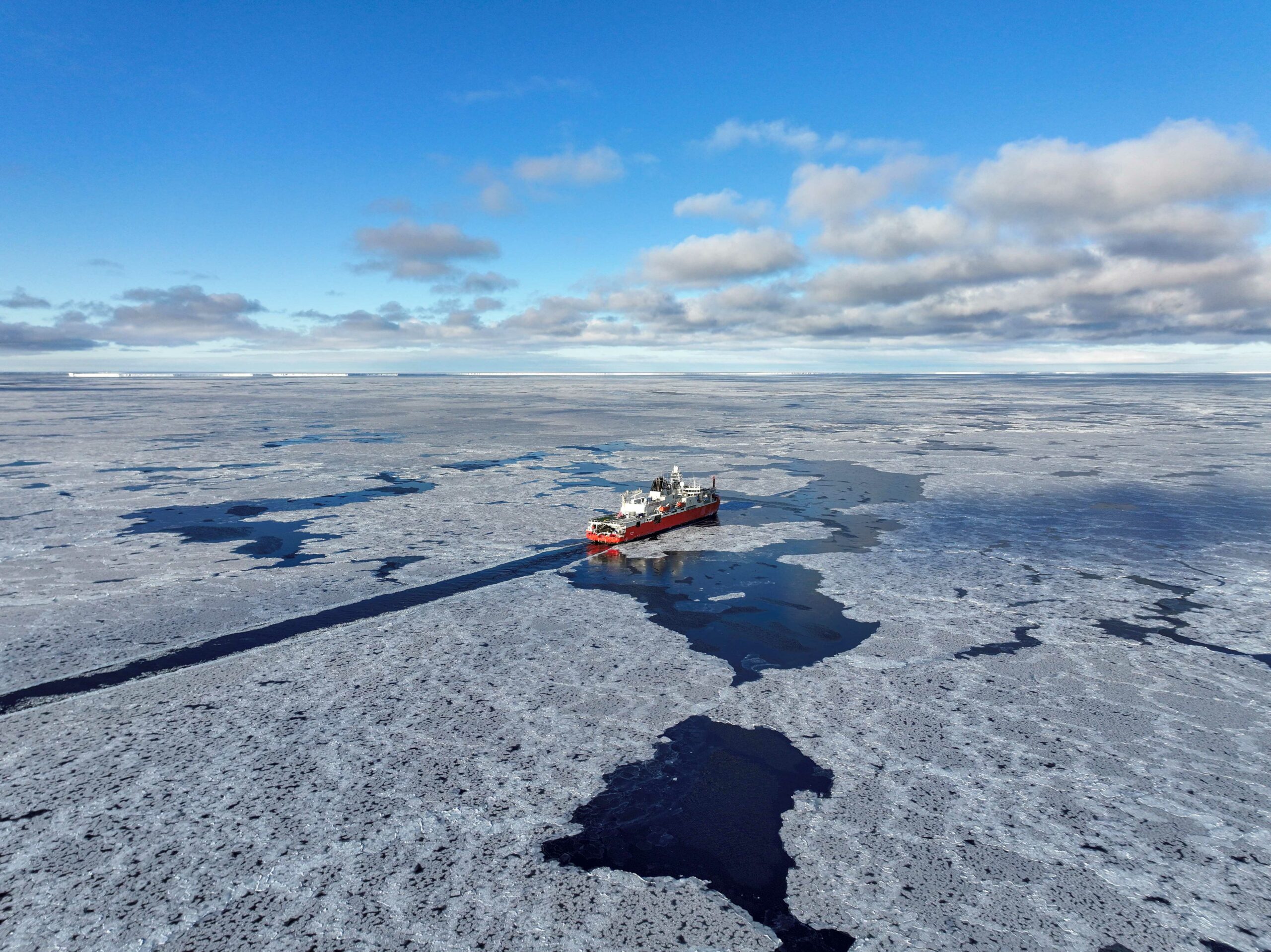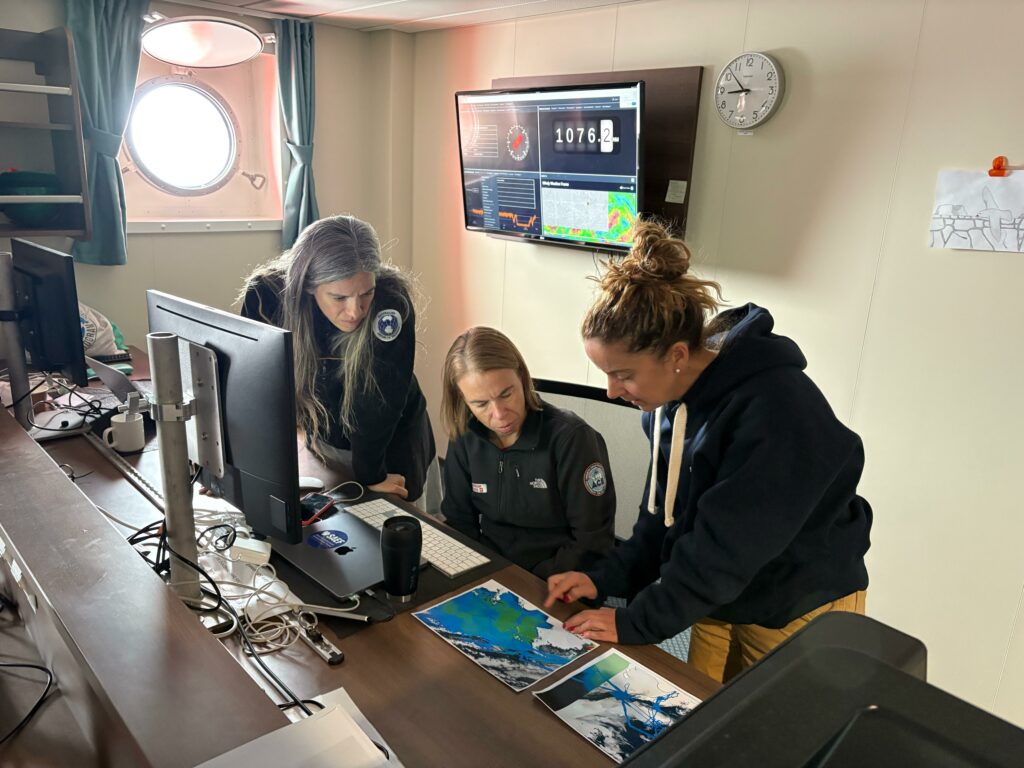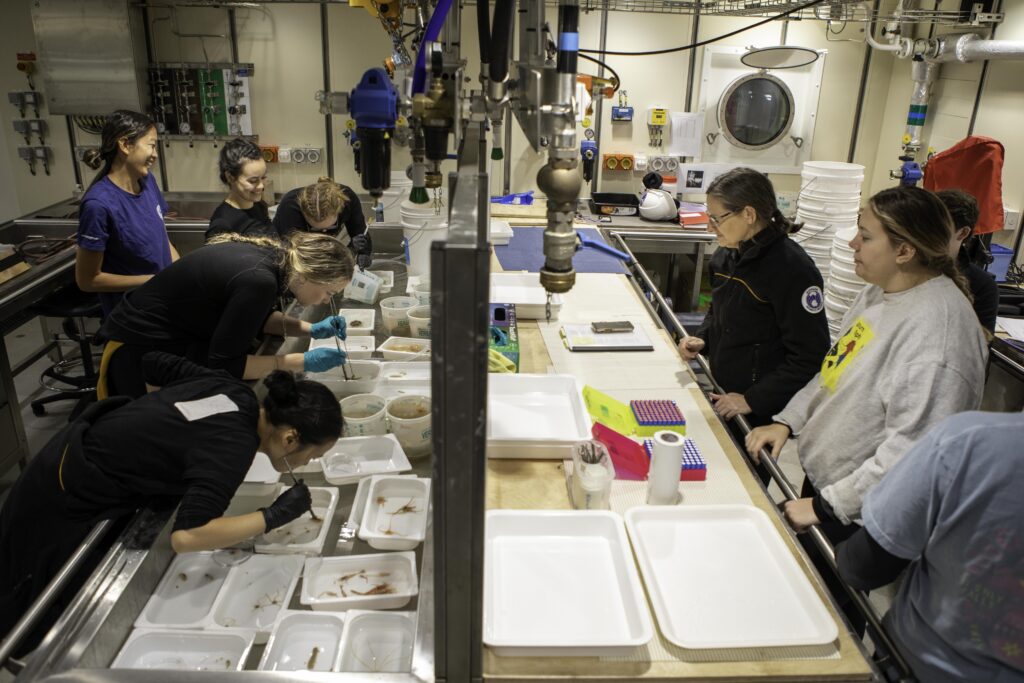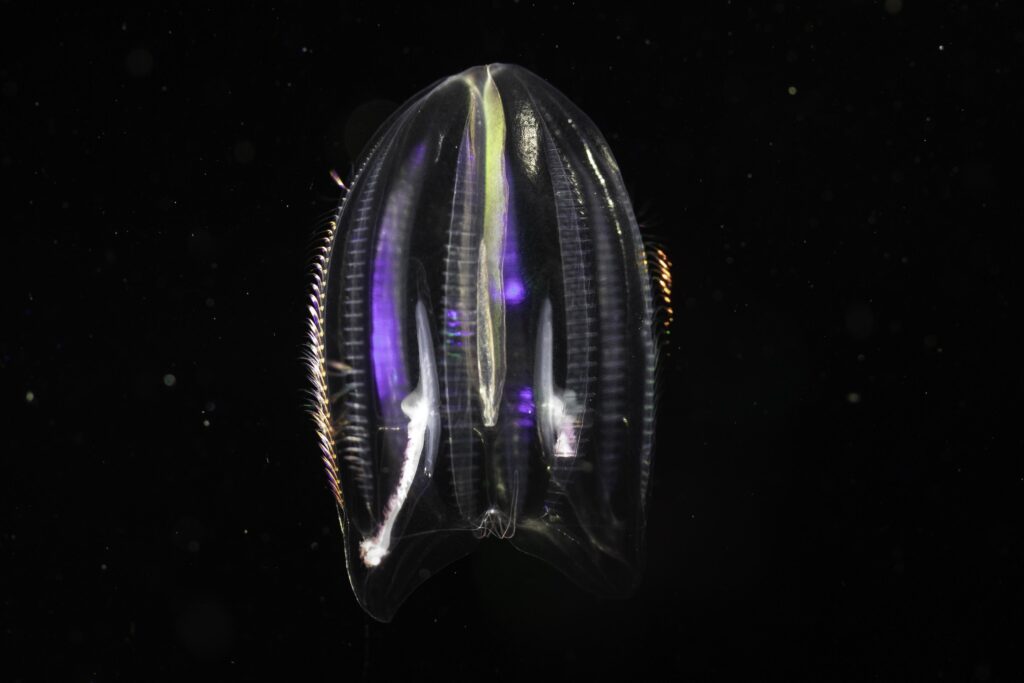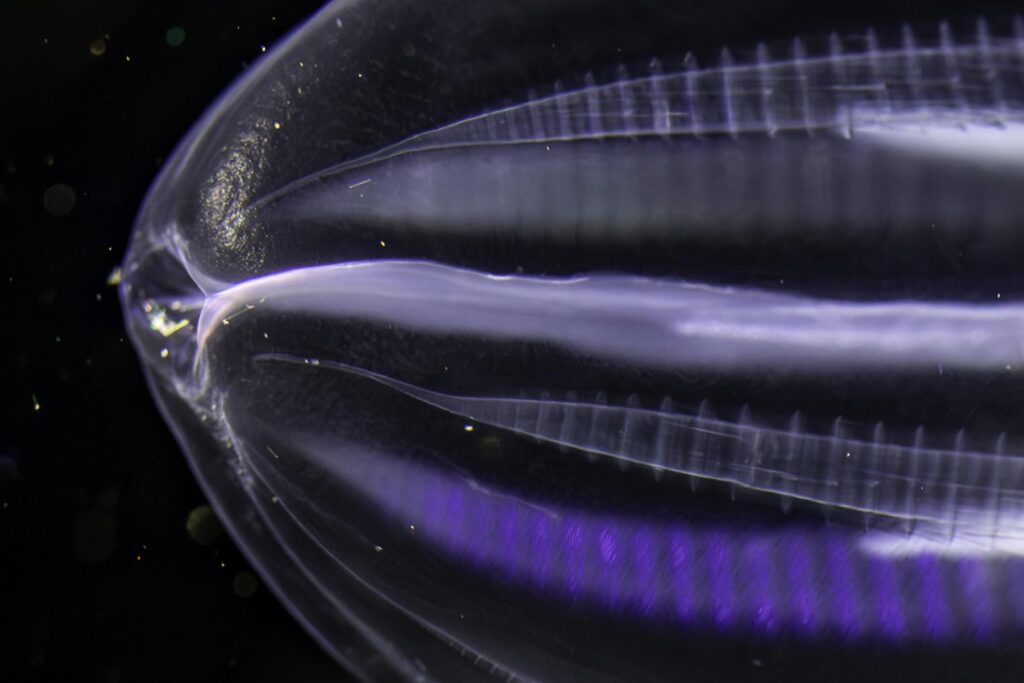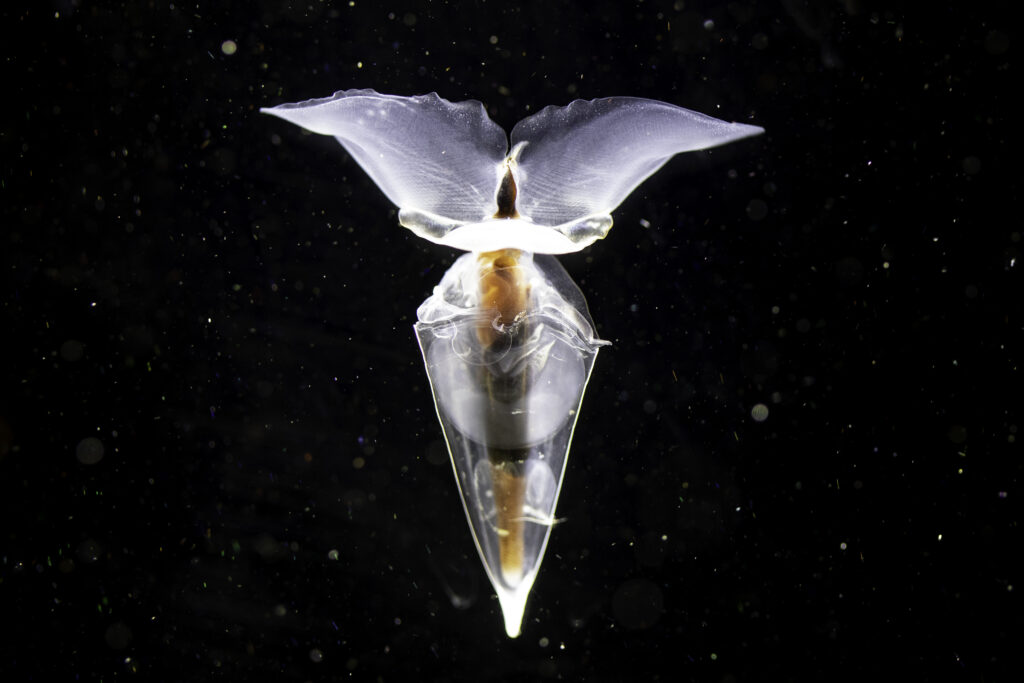Denman Marine Voyage
The Denman Marine Voyage (DMV) will take 60 scientists to the Denman glacier region in East Antarctica for 60 days (50 science days) in February-May 2025.
The aim of the DMV is to gain a better understanding of how the glacier system behaved historically, how it is being affected by global warming and the possible implications for sea level rise, ocean circulation, carbon export and ecosystems.
The DMV will build on the scientific insights gained through the Denman Terrestrial Campaign, which studied the glacier system from inland.
This is the first dedicated marine science voyage by Australia's icebreaker RSV Nuyina. The scientific research program is multidisciplinary in nature and a collaboration between four of Australia’s leading Antarctic science organisations from government and universities: the Australian Antarctic Program Partnership (AAPP), the Australian Centre for Excellence in Antarctic Science (ACEAS), Securing Antarctica’s Environmental Future (SAEF), and the Australian Antarctic Division (AAD).
The voyage is undertaking ambitious work that is critical for Australia’s future and the welfare of the global community, in a newly emerging region of concern for Antarctica’s contribution to sea-level rise: the Denman glacier-ice shelf system.
The marine science projects on the voyage aim to:
- Use ship-based observations, moorings, remotely-operated gliders and robotic floats to gather information about the temperature and salinity of the ocean, the effects on current and future ice mass loss, and future sea level rise
- Map the shape and depth (bathymetry) of the ocean floor to determine the pathways for warm water to travel from the edge of the continental shelf to the Denman Glacier
- Collect rock samples and cores of ocean sediments to reconstruct the advance and retreat of the Denman Glacier over many thousands of years
- Collect chemical and biological data to explain why waters in the west are more biologically productive than in the east
- Develop the first detailed maps of the sea floor in this region, and the unique life it supports, to inform conservation efforts
- Record video and collect seafloor and fish specimens to understand the seafloor biodiversity and its vulnerability to changes
- Undertake atmospheric research with radars, chemical sensors and weather balloons to trace the connections between marine biology and how clouds form over the Southern Ocean
- Use the Nuyina’s ‘wet well’ to capture plankton and study how environmental changes in the ice and the ocean will affect food webs
The workforce onboard is diverse and mostly from universities, from undergraduate students to professors, developing future generations of polar research leaders. The voyage involves four individual partner science organisations operating as part of the Australian Antarctic Program.
VOYAGE BLOG
All part of the process: biology meets chemistry off an ice shelf
Revealing the drivers of phytoplankton growth, their role in carbon cycling, and dynamics between ocean, seafloor and ice shelves
Moorings: Sentinels to monitor ocean heat when we’re not there
Like weather stations for the sea, the Denman Marine Voyage has installed three moorings off the ice shelf to monitor ocean heat
Diving deep: Exploring the Denman Glacier with CTDs
How our scientists are tracking warm currents in ocean waters thousands of metres deep
Looking up: Tracing the secrets of Southern Ocean clouds
While oceanographers plumb the depths, atmospheric scientists on the Denman Marine Voyage look skywards
Into the ice (or not)
Low sea-ice cover means the Denman Marine Voyage can access places no humans have been before
It’s the little things that count
On the Denman Marine Voyage, the plankton team is busy collecting tiny creatures with the ‘wet well’ on icebreaker RSV Nuyina
“Dream experiment”: Antarctic voyage a depth gauge for future sea-level rise
As an oceanographer, I’m excited about the prospect of getting ocean, ice and climate data from a region where few observations have been collected
“What’s driving the changes we’re seeing?”: Research voyage heads to Denman glacier
First opportunity for Australian marine research into one of East Antarctica’s most rapidly retreating glaciers
First marine science voyage to probe vulnerable Antarctic glacier
A two-month mission exploring the Denman Glacier region about 5,000 kilometres south of Australia
Tracing the pathways of warmer waters melting ice shelves
Join our scientists in East Antarctica as they explore underneath a floating ice shelf with a power tool, a long drill, lots of line — and plenty of stamina.
VIDEOS
PHOTO GALLERY
